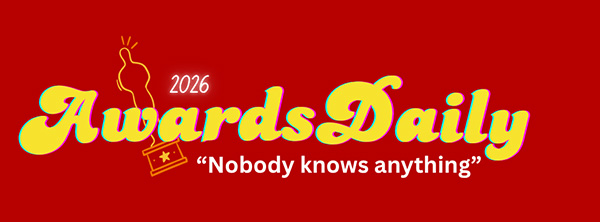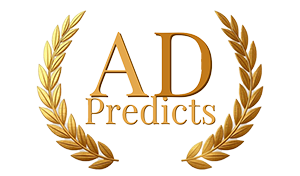Jemel McWilliams is a true multi-hyphenate working as, among other things, a choreographer, artistic director, dancer, and producer—collaborating with artists like Janelle Monáe, John Legend, Alicia Keys, and Lizzo. McWilliams’ status as one of the busiest choreographers in Hollywood has now earned him a new title—Emmy nominee! This first nomination is for his work choreographing The Oscars‘ opening number, ‘Come Alive’ performed by Janelle Monáe at the ceremony earlier this year.
‘Come Alive’ is an eclectic performance—a diverse celebration of 2019’s contributions to cinema, and a deeply personal showcase for Monáe’s star power.
“I hope that people really go back and watch [the performance] multiple times. We took an intelligent approach to everything from casting to wardrobe, to the choreography, to the messaging,” McWilliams said. “I hope people feel that it was a message of inclusivity. I’m very proud of that.”
Read our complete interview with Jemel McWilliams below:

Awards Daily: Jemel, let’s just take a minute to celebrate because this is your first Emmy nomination! Congratulations!
Jemel McWilliams: Wow, isn’t this crazy? And I will take every opportunity I get to celebrate, with you, and whoever else. [Laughs].
AD: So, first of all, I want to know what your reaction was that morning. But also, how do you feel now having had a couple of weeks to reflect on the news?
JM: It’s pretty epic. And I’m going to tell you, honestly, that morning, I played it too cool. I think understanding that these are COVID and pandemic times. There’s so much that’s going on in the world. I was like, ‘Oh, this is amazing.’ I called my mom, she freaked out for a second. I was like, ‘Wow, isn’t this cool?’ Then I proceeded to go back to sleep. And within like three minutes, I just jumped up and was like, ’Wait a minute, this is happening!!’ And then next thing you know, the phone calls started coming in. I guess people started realizing. And from that point forward, I couldn’t sleep. And as of now, a couple of weeks later, I’m still riding that same buzz.
These don’t happen often—especially, you know, people coming from where I come from, the inner city of D.C. and being a black, male creative, and just being a black creative in general. So, I’ve just been going with it. And I’ve been proudly saying, ‘I am an Emmy nominee.’ I’m trying to stay super present. I don’t want to put ‘nominated’ on the end of it yet. I wanted to stay in the present of, ‘I’m a nominee’ until they reveal who the winner for the year is.
I celebrate the black creatives who are getting recognized now. And I appreciate the film Academy for giving us the platform and the Emmys too, for honoring us with this nomination.
AD: You’ve worked closely with Janelle Monáe for several years. Is that how you got involved with doing the opening number for The Academy Awards?
JM: Yeah. I’m Janelle Monáe’s artistic director and choreographer. When they booked her one of the things for her was to make sure that her entire team, so myself, and the Wondaland team, that we would be able to do the performance ourselves so that it stayed true to her and her brand.
AD: How did your working relationship with Janelle come about?
JM: So, years ago, during her Yoga era, I was her assistant choreographer, and one of her main dancers, anytime she used male dancers. From there, we just built a rapport. I was doing movement coaching for her and we just had this kindred spirit, this kinetic energy. And when it was time for her to come back for another album cycle, for the Dirty Computer album, she invited me down to Wondaland in Atlanta and we spent like a couple of weeks just kind of vibing.
And next thing I know, I’m looking up and I’m doing the entire Emotion Picture, all of the music videos, and all the performances. And here we are today—we’ve been rocking for years since.
AD: Tell me about the marriage between Janelle and the Oscars, and keeping with her brand, but also doing something that’s fresh and unique for the show.
JM: It was an honor to just be asked to come onto the Oscars. We pitched the ideas, the creative that we thought would be the best for an opening number to represent. We were given just a few key things to note—of course, this opening needed to highlight the films of the year. And for us, it was important to highlight the films that were impactful to us as a team. So that’s what we did. We did research, we watched all the films ahead of time. You know, we really tapped into the films that we felt had the most, impact culturally, as well as in Hollywood.
The theme for the performance was not to only represent those movies that were underrepresented, but to represent the movies that we felt— the women actors, the women directors— that we felt were deserving of recognition, including the films that were nominated.
From there, it just came together. We continued to work with the producers, Stephanie [Allain] and Lynette [Howell Taylor], but we kept it on brand by making sure that it was something that was us, that we presented in the original creative pitch. Naturally in a process like this, it goes through multiple revisions, but it’s always important to Janelle to make sure that we stick to the original vision. And it was supported by The Academy. So that’s how it actually came together. It was a marriage that just ended up working out.
AD: How involved was Janelle? And how closely did the two of you collaborate on the concept?
JM: Oh, she is the visionary. I always say she’s my muse and my inspiration. So, we pull from each other. And she’s my sister. We’re actually real friends. The working environment has this flow—we have this back and forth together.
We’ll start ideating months and weeks before there’s any movement with regards to what’s happening with dancers or choreography or anything —we just make sure that we’re tapped into the theme and into the emotion and the message that we want to convey. Everything is always rooted in messaging for us. And then from there we get into the performance flow and the choreography, she and I will get into a studio and we’ll just start moving so that usually gives us some direction. I pitch the direction that I see for the performance flow and put it on the dancers. And there we go.
AD: I watched the performance several times before speaking with you and I have to ask you about that incredible moment when Janelle says, ‘I’m standing here as a Black, queer artist.’ And you could really tell how very personal the moment was for her.
JM: Yeah.
AD: And she does mention ‘Oscars So White.’ So, talk to me about the messaging and expressing that through your choreography.
JM: To be aligned in this moment, in this year of 2020 during all that 2020 would open itself up to be…and you know what we’ve been dealing with, with the Oscars, over some years now— to be aligned at this time in life. I just felt so blessed and so honored.
For all of us involved, it was important that we stuck to the messaging and we stuck to our purpose and we knew that this was an amazing opportunity and amazing platform to just get out there and be our most authentic and truest selves. And that’s what we did.
For example, 1917 which was nominated for Best Picture, was about World War I. But, we represented those characters by using all women. And we had a black woman with short blonde hair. We had an Asian woman with purple hair. We had a white woman with short brown hair. We had an Israeli woman up there. That meant a lot to us to show representation—like this was our interpretation of this. The beauty is that the world gets to be imaginative in that type of space. So, with the choreography, it was important to make sure we amplified that.
I always say this, ‘Your soul speaks.’ Right? And the soul is connected to other souls. In the audition, I was looking for dancers who I knew could technically deliver what I needed. But then I was also looking for, who has something to say from their souls? And there’s this magical thing that happens when all the elements are aligned.
Before my first rehearsal, I put everyone in a circle and I expressed to them what our vision was—and what Janelle’s vision was for this performance, and the impact of this performance and I looked each individual dancer in the eye and made sure that they agreed that they were aligned with the same purpose. It grows from there. Everyone’s heart is centered in the same space.
And then I also leave room within the performances for Janelle to be an artist and to just be inspired. So, in those moments where she’s speaking from her heart and she is truly just connected to self and making sure the world feels that.
AD: ‘Come Alive’ features a large cast of background dancers. How did you find the balance between showcasing each of them and choreographing for a group while also giving Janelle the space she needs to shine and have her moment?
JM: Yeah, that’s a real balance to find. [Laughs]. You know, Janelle, she’s not here for selfish intent, she’s here for actual full messaging and for purpose. It’s about the full picture. She recognizes that she is a vessel as the lead artist on this, but that everyone there is supporting this bigger vision. And the vision was to talk about these characters coming alive and to really amplify the voices of those who had the films of the year. And then some of those voices from those films that we don’t often hear about.
So for her, it was, ‘Hey, let’s make sure that a Queen & Slim character is seen in this.’ It’s one big synergized moment. So, it’s not hard for me to find that balance and to really create that within the performance and within the camera angles and all of that because I have an artist that understands that and supports it.
AD: I was doing research and looking through your social media and you bill yourself as ‘Your Quintessential Renaissance Man,’ which I’m just obsessed with.
JM: [Laughs].
AD: I have to know more about that!
JM: Yeah. I mean, listen, the Quintessential Renaissance Man, because I’m at this point in my life where I recognize that I can do anything and everything that I want to do. I’m aligned with artists like Janelle Monáe, John Legend, who is an EGOT. And so I’m like, ‘Why, do I have to feel like I’m any different from that?’ I can achieve all the things that I want to do.
So, not only am I an artistic director and choreographer, but I have Jamelle McWilliams Productions. I do music video directing, I have a clothing line that I’m working on, I’m an actor—listen, you name it, I’m probably down to try and do it.
I pull this tag from a friend of mine, Swizz Beatz, where he says, ‘The sky is not the limit, it’s just the view.’ So me being a ‘Quintessential Renaissance Man,’ it just leaves me room for all the many things that I want to experience in life. And that’s what I do.
I wake up and say, ‘That seems fun.’ Guess who’s going to dedicate themselves to trying it and doing it? Me! [Laughs].
AD: You’ve spoken about your vision for ‘Come Alive.’ What’s your vision and the driving force behind your various projects? What ties them all together?
JM: I love that. Between, Janelle, Lizzo, John, and the plethora of other artists that I’ve worked with, I am somehow, and I think it’s because of who I am, I’m always connected with artists that speak for the marginalized and artists who are invested in their messaging.
I think that’s a lot of what it is. I’m just really a lover of love and a lover spreading love and spreading God’s love, so that’s really been the leading force behind everything that I do, even within Jamel McWilliams Productions is to spread love and light.
If you go through my Instagram, you’ll see that I’ve been this guy and I’m actually proud of that. It took me a long time to get to this place and I let that lead my life—it keeps me in a clear headspace and it keeps me feeling like I’m of service at all times. That’s just the leading force behind who I am.
Jemel McWilliams is Emmy-nominated for Outstanding Choreography for Variety or Reality Programming for The Oscars Opening Sequence Routine, ‘Come Alive’
















